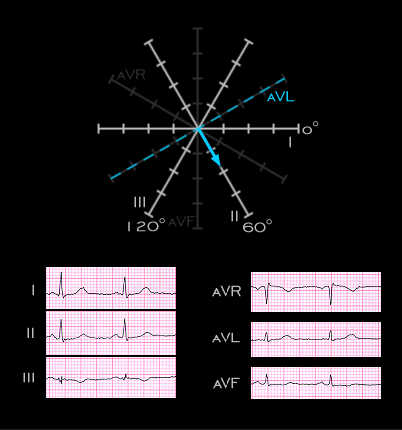
The P wave in this ECG has a frontal plane axis of +60 degrees (the blue arrow). It is 1mm positive in leads I and III and 2mm positive in lead II (remember that I +III = II). Notice also that the P wave is nearly flat, or isoelectric, in lead aVL indicating that the P wave axis is perpendicular to the axis of aVL.
